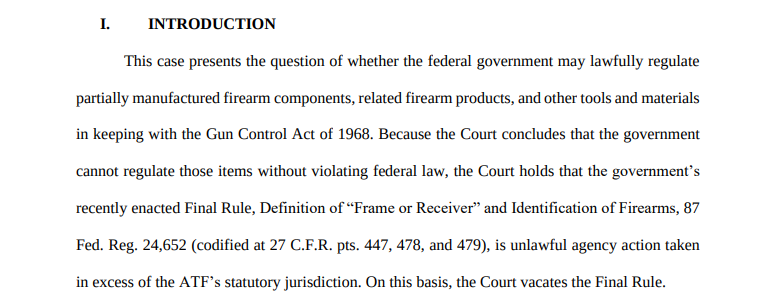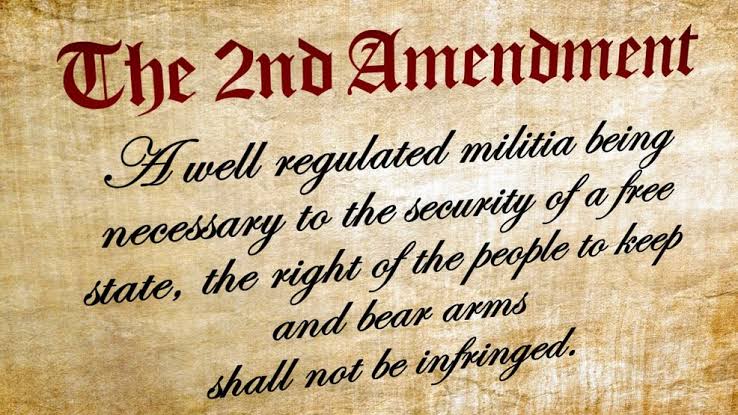The deaths of 21 people, including 19 children, at an elementary school in Uvalde, Texas, are a nightmare that I can’t even fathom. It is pure evil.
Yet millions of Americans seem prepared to accept this nightmare as the new normal. They don’t ask what could turn an 18-year-old boy into a monster who could look innocent children in the face and shoot them to death while dozens others were screaming, while blood splattered and puddled in the classrooms, while his own life ticked down to its final meaningless minute. They just assume there are more like him – waiting, planning, marking time, ready to do the unthinkable.
And their proposed solution is to take guns away from law-abiding American citizens on the assumption that evil people will be deterred from doing evil if they can’t obtain (take your pick) either long guns or handguns (or both).
Why do I get the feeling these presumably well-intentioned people don’t know what evil is? Don’t they realize that mass murder is never normal? Perhaps more importantly, why do they think that the government can hinder evil by passing new laws that will restrict gun ownership?
The crisis isn’t that children kill other children with guns; the crisis is that children want to kill other children with guns. And more broadly, there is a moral crisis in our country because we teach children that right and wrong are no longer absolutes, that they are rather subjects for debate. And the more we debate right and wrong, the more that evil gains a foothold in our society.
But it is easier to talk about guns than it is to talk about evil. It is easier to blame guns than it is to blame our sick society for what happens to our children. If you want to prevent mass murder, the answer isn’t to take guns out of classrooms; it is to put God back in classrooms, and to fearlessly teach children about good and evil, about right and wrong, about the basis for our laws and our civilization. A society that is unwilling to acknowledge a higher power is unlikely to have any answers for children who question authority.
Even if we can’t reverse the secularization of America, there are steps that can be taken to improve public safety without restricting gun rights.
If you want to prevent psychotic teenagers from acting out their dreadful fantasies, for instance, try providing mental assistance when they make threats to kill people. Even better, don’t prescribe dangerous psychotropic drugs that can result in hallucinations, paranoid delusions, mood swings, depression, and “abnormal” thoughts. Those are all listed side effects for Adderall, one of the most commonly prescribed drugs for teenagers with behavioral problems.
Instead of taking guns away from people who have never even contemplated committing a crime, how about this? Pass laws that make it a felony to threaten violence against children or to threaten random violence in public places. Then prosecute those crimes and lock up the people who are deemed a threat by a jury of their peers. Don’t do what the California state Senate just did and vote to remove the requirement that police be notified when students make threats against a school official. That is just plumb crazy.
Of course, reliance on the police to solve all our problems is also crazy.
That is the logical fallacy at the heart of the argument of would-be do-gooders like Beto O’Rourke who want to grab your guns. Think about it. They are asking us to turn our safety (and our children’s safety) over to the care of law enforcement when it was law enforcement that let us down at Uvalde. From the video and testimonial evidence, it appears that police were called to the scene of the massacre quickly and then waited. Waited while children died. Waited while children were risking their lives by making 911 calls to beg for help. Waited. For more than an hour. Waited. Until finally Border Patrol officers took matters into their own hands and shot the demon.
Do you see the irony? The people of Uvalde trusted the government to protect their children, and children perished. But give one parent a gun at Uvalde and there’s at least a 50/50 chance he or she would have ambushed the shooter and killed him. And the more law-abiding people who have guns, the better off the rest of us will be when crazed shooters decide to go on a killing spree.
Unfortunately, too many people looking for easy solutions want to take guns out of the hands of citizens and put all the power for our protection in the hands of government. That goes against our lived experience, not just at Uvalde but in society overall. In case after case, we the people have been conditioned to believe that the government is incapable of protecting us from criminals.
Consider the summer of 2020 when our cities were burning and mobs were rampaging in state after state. What did the government do to protect us? Nothing. They decided it was safer to let the mobs riot, to let the looters loot, to let the fires burn – perhaps because they were afraid they would be “defunded” if they actually fought to protect citizens from dangerous criminals. Gun owner Kyle Rittenhouse decided to try to protect Kenosha, Wisconsin, and he was arrested and charged with murder for his trouble.
Moreover, in city after city, Democratic prosecutors have decided it is easier to let criminals go than to send them to jail. This crusade against “mass incarceration” is also known as sweeping the dirt under the rug. The problem isn’t that too many people are in jail; the problem is that too many people commit crimes. Left-wing prosecutors like George Gascon in Los Angeles are adding fuel to the fire by releasing criminals back into society without punishment, thus giving them incentive to commit more crimes. Refusing to prosecute gun crimes guarantees that more guns will be used in crimes.
And let’s not forget the most glaring example of the government abdicating its responsibility to protect the public from criminals – Joe Biden’s open border. How many millions of people have to enter our country illegally before you lose confidence in the government to do its job? Well, I’m well past that point. Like millions of other Americans, I don’t trust the government. Can you think of any reason why I should, when the Department of “Homeland Security” not only allows unvetted immigrants into the country illegally but then flies them to their preferred destination? It’s that same government, by the way, which says that people like me (i.e., Republicans) are domestic terrorists and would like nothing better than to lock us up just like King George wanted to lock up those unruly colonists who insisted on something called “liberty.”
Joe Biden wants to suspend the Constitution and deny American citizens the right to bear arms of their choice. Of course he does, because it is the easiest answer to a complicated problem, and because it would consolidate power in the hands of the government. Last week, Biden spoke earnestly and forcefully to a prime-time audience and told us that the shooting at Uvalde was enough, that no more innocent people need die if we just turn over our guns. Coincidentally, an hour before Biden spoke, I was watching an episode of the TV series “Alex Rider,” where these frightening words were spoken:
“From Facebook data to Internet oversight, what we can see is that if your message is strong enough, you can take away people’s liberties, and they will applaud you for doing it.”
Unfortunately, such a message is not just fiction. Consider yourself warned.






